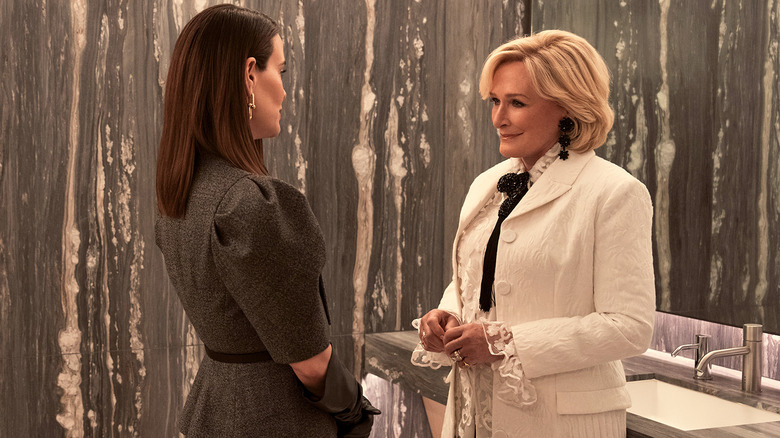New York City’s voters are deciding the outcome of a generational and ideological divide that will resonate across the country as they choose the next mayor to run the nation’s largest city. A victory for Zohran Mamdani would give the city its first Muslim mayor and its youngest leader in generations, while elevating the democratic socialist to political stardom. For in-depth analysis and a deeper perspective, Rochelle Ferguson Bouyahi is pleased to welcome former New York Assistant Attorney General Reed Brody. Mr. Brody is currently an ICJ Commissioner, Human Rights Lawyer, War Crimes Prosecutor, and Author of ‘To Catch a Dictator’. “We have to put this election in a national context,” explains Mr Brody. “We have a president who is trampling on the Constitution, obliterating checks and balances, and sending the National Guard into Democratic cities.”
This story originally appeared on France24
Ryan Murphy’s new legal drama “All’s Fair,” starring Kim Kardashian as a founding partner at an all-female divorce law firm, is finally having its day in court, and the verdict is… pretty rough.
For a myriad reasons, TV critics are taking special pleasure in tearing down the new Hulu series, which dropped its first three episodes on Tuesday. You can just picture them at their keyboards, giggling quietly to themselves as they feverishly pound out their scathing take-downs.
The Hollywood Reporter called it “unforgivably dull,” Variety called it “clumsy” in its storytelling and “condescending” in its supposedly feminist messaging, and The Times went so far as to say that it “may be the worst TV drama ever.”
For the record, we’re not here to refute those reviews. Kardashian’s acting, for one thing, has not improved since her disappointing turn in “American Horror Story,” and the show gives her too much heavy lifting for someone with her dramatic limitations.
We would, however, like to shift the conversation towards one very important name that most of these reviews conveniently gloss over: Sarah. Paulson.
Sarah Paulson’s Performance Makes All’s Fair Worth Watching
Allow us to set the scene: Paulson plays Carrington Lane, a rival divorce attorney who hates the show’s core four — Allura Grant (Kardashian), Liberty Ronson (Naomi Watts), Emerald Greene (Niecy Nash-Betts) and Dina Standish (Glenn Close) — with a burning passion, deeply bitter towards them for leaving her behind at a male-dominated firm to start their own 10 years ago.
Carrington’s motivations are a bit more complicated than that, but her mission is clear: to cut down Allura’s team at every turn, be it with an underhanded legal chess move or a psyche-shattering insult, both of which typically involve dropping a c-bomb or two. Speaking of which, that particular word — one you neither want to overuse nor misuse, lest it feel gratuitous — is a bit of a delicate weapon, one Paulson handles like a graceful katana. No matter how many times she says it, it always cuts.
But it truly cannot be overstated how much Paulson’s phenomenally unhinged performance saves this show. In some ways — the best ways, really — it feels like Murphy has given us Sue Sylvester 2.0, only this time she’s traded her tracksuit for a power suit and she’s allowed to swear. Who else but a spiritual successor to Sue could stare Close in the face and tell her she looks like George Washington?
And Can We Talk About Some Of Those Guest Stars?
There’s also some fun to be found in the show’s divorce-of-the-week format, for which “All’s Fair” has recruited an exciting roster of guest actresses. Come on, Judith Light (“Transparent,” “Ugly Betty”) as a sassy Manhattan socialite? Elizabeth Berkley (“Saved by the Bell”) as a scorned scientist? Jessica Simpson (“Newlyweds: Nick and Jessica”) as a plastic surgery victim out for revenge? Every casting feels like a gay fever dream, each one gayer and more feverish than the last.
In fact, “gay fever dream” is an accurate description for “All’s Fair” as a whole, consistent with most of the shows Murphy has given us throughout his career. It’s fun, flashy fluff, and if you’re looking to enjoy an hour of television with your brain turned all the way off (which is fine!), it might be worth giving the show a chance before making your own ruling.
What say you, people of the online jury? Have you checked out any of “All’s Fair,” and what do you think? (Do you at least agree about Paulson?) Grade the show in our poll below, then drop a comment with your own review.



























